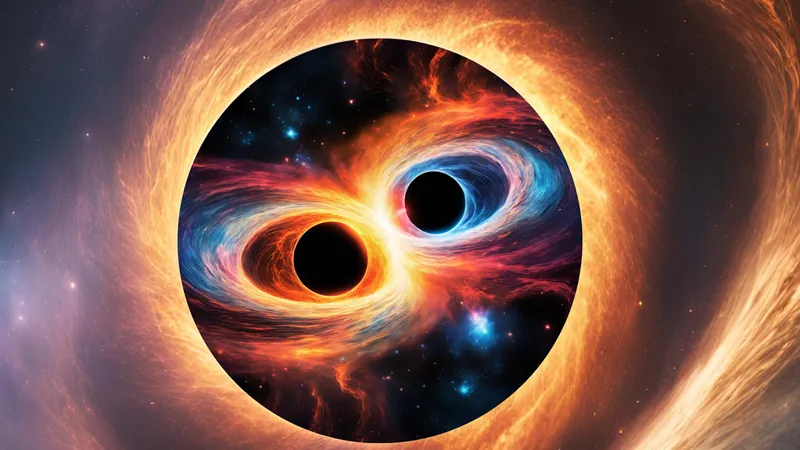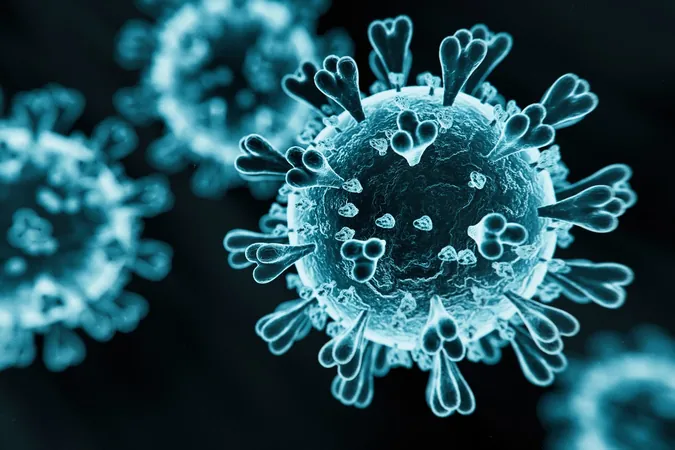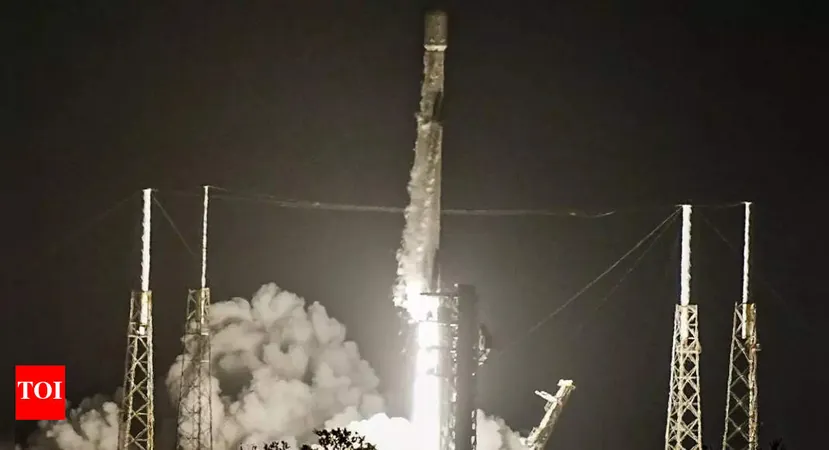
Unlocking the Secrets of Black Holes: A Cosmic Ancestry Test Using Gravitational Waves
2025-01-20
Author: Amelia
Introduction
Did you know that just as DNA testing can unravel the mysteries of human lineage, gravitational waves can help researchers trace the ancestry of black holes? A groundbreaking study led by scientists at Cardiff University reveals that the spins of supermassive black holes, formed from successive mergers of smaller black holes, may hold the key to their origins.
The Nature of Black Holes
The fascinating comparison to human DNA testing arises from the fact that black holes themselves are remarkably featureless. Theoretical physicist John Wheeler famously stated, “black holes have no hair,” highlighting their enigmatic nature. While we can identify physical characteristics in humans, this is not the case for black holes. Instead, scientists can observe subtle ripples in spacetime, known as gravitational waves, a concept first proposed by Albert Einstein over a century ago.
Tracing Cosmic Ancestry
The research team found that the rotational patterns, or spins, of supermassive black holes can indicate where in the universe these colossal entities were born. By detecting gravitational waves using facilities like the Laser Interferometer Gravitational-Wave Observatory (LIGO) and the Virgo Observatory, researchers can decode the cosmic “birth certificates” of these black holes.
Insights from Researchers
Isobel Romero-Shaw, a researcher at the University of Cambridge, stated, “Our study gives us a powerful, data-driven way to identify the origins of a black hole's formation history, showing that the way it spins is a strong indicator of it belonging to a group of high-mass black holes, which form in densely populated star clusters where small black holes repeatedly collide and merge with one another.”
The Mystery of Supermassive Black Holes
The curiosity surrounding black hole genealogy arose when astronomers noticed that certain black holes were too massive to have originated from a single dying star. While stellar-mass black holes—typically 10 to 100 times the mass of the Sun—form from the collapse of massive stars, supermassive black holes, with masses amounting to millions or even billions of Suns, likely arise from the mergers of smaller black holes.
A Milestone in Astrophysics
The first detection of gravitational waves in 2015 marked a milestone in astrophysics, corroborating Einstein’s century-old predictions. The gravitational waves emitted during black hole mergers provide invaluable data that helps scientists understand how these cosmic giants evolve.
The Mechanics of Merging Black Holes
As binary black holes spiral towards one another, their constant acceleration creates gravitational waves that carry away angular momentum, causing them to tighten their orbit. Eventually, they collide and merge, resulting in a more massive “daughter” black hole, albeit not as massive as the sum of its parents due to mass loss in the form of emitted gravitational waves.
The Challenge of Understanding Formation
Team leader Fabio Antonini commented, “As we observe more black hole mergers with gravitational wave detectors like LIGO and Virgo, it becomes ever clearer that black holes exhibit diverse masses and spins, suggesting they may have formed in different ways.” Understanding these formation scenarios remains a challenge, but the latest findings shed light on the complex processes at play.
Shifts in Black Hole Spins
By analyzing data from 69 gravitational wave events, researchers discovered a significant shift in black hole spins as they reach certain mass thresholds, providing insight into their formation within densely populated star clusters. With advancements in theoretical modeling, scientists aim to interpret future gravitational wave detections more accurately.
Looking Ahead
Upcoming facilities, such as the proposed underground Einstein Telescope and the space-based LISA (Laser Interferometer Space Antenna), promise to elevate our understanding of black holes. As Thomas Callister from the University of Chicago noted, “Collaborating with other researchers and using advanced statistical methods will help to confirm and expand our findings, especially as we move toward next-generation detectors.”
Conclusion
In a universe filled with mysteries, the cosmic “DNA test” for black holes is just the beginning. As we enhance our observational tools, who knows what other secrets these intriguing entities might reveal? Stay tuned as we continue to journey deeper into the cosmos!









 Brasil (PT)
Brasil (PT)
 Canada (EN)
Canada (EN)
 Chile (ES)
Chile (ES)
 Česko (CS)
Česko (CS)
 대한민국 (KO)
대한민국 (KO)
 España (ES)
España (ES)
 France (FR)
France (FR)
 Hong Kong (EN)
Hong Kong (EN)
 Italia (IT)
Italia (IT)
 日本 (JA)
日本 (JA)
 Magyarország (HU)
Magyarország (HU)
 Norge (NO)
Norge (NO)
 Polska (PL)
Polska (PL)
 Schweiz (DE)
Schweiz (DE)
 Singapore (EN)
Singapore (EN)
 Sverige (SV)
Sverige (SV)
 Suomi (FI)
Suomi (FI)
 Türkiye (TR)
Türkiye (TR)
 الإمارات العربية المتحدة (AR)
الإمارات العربية المتحدة (AR)